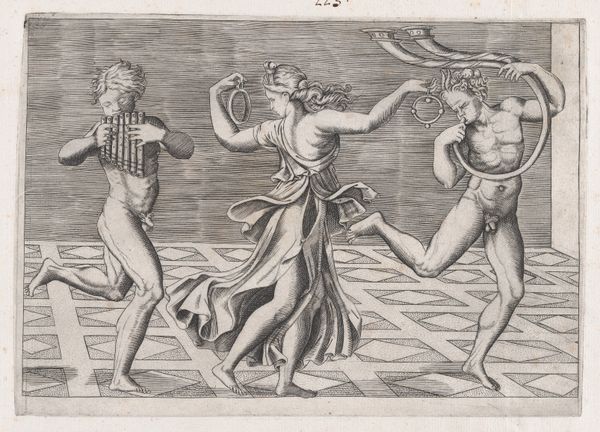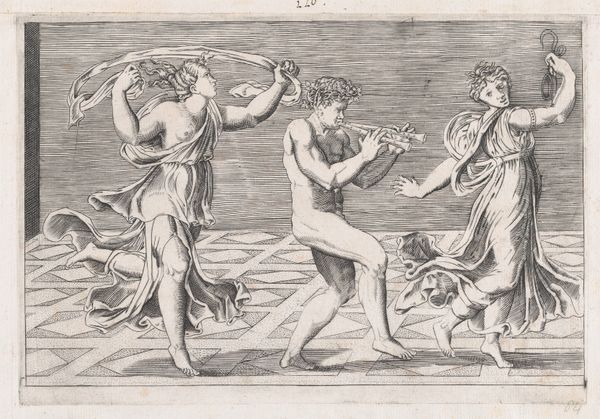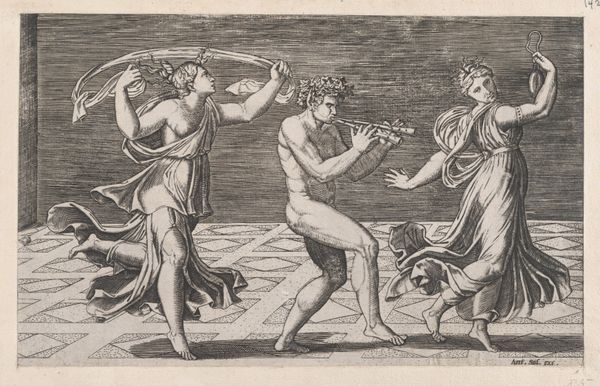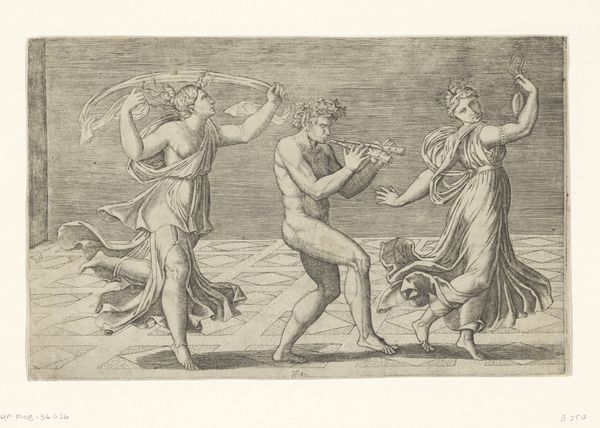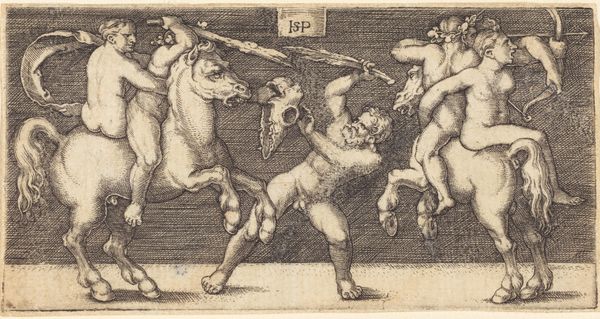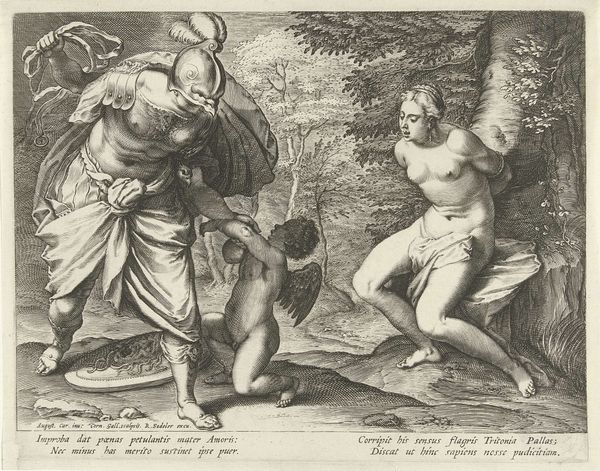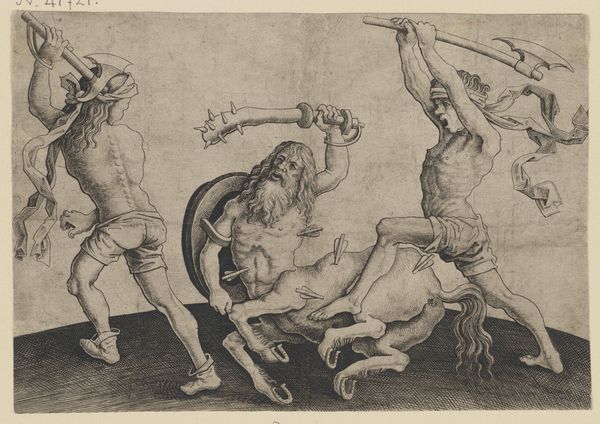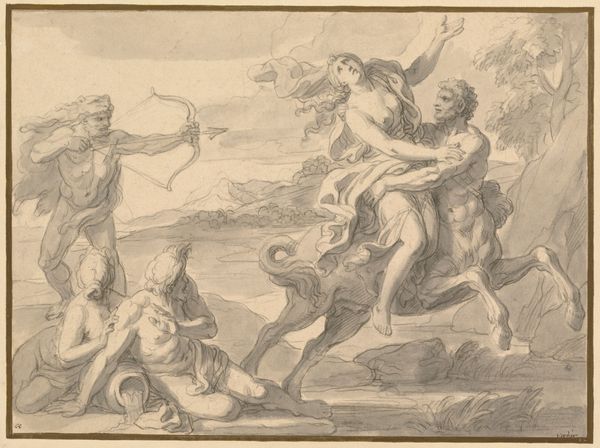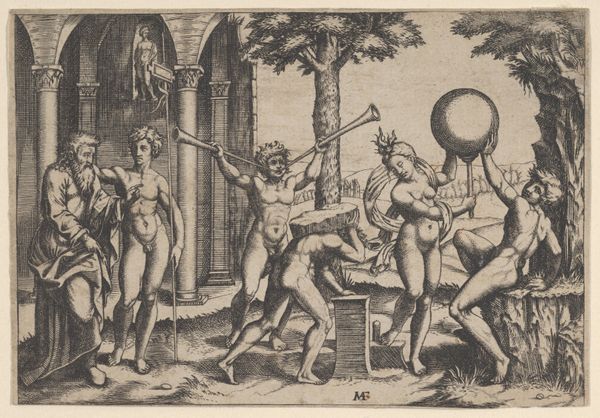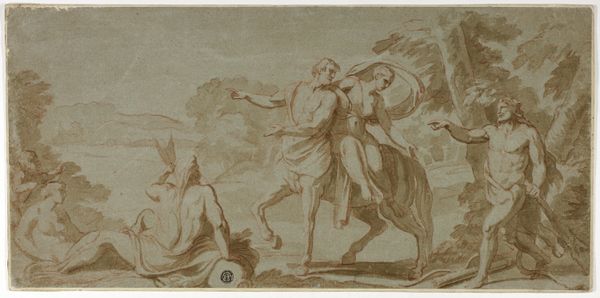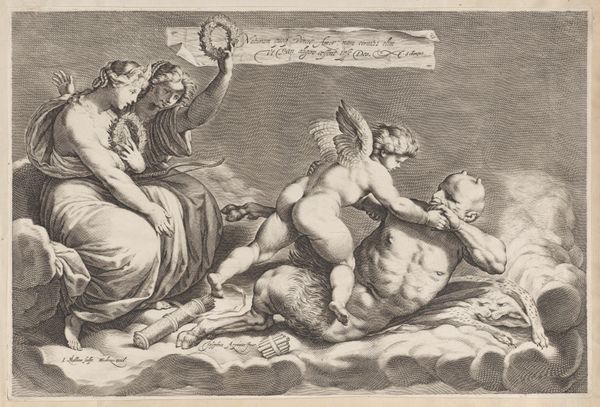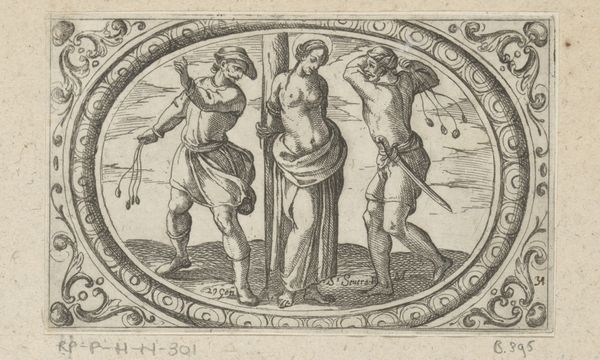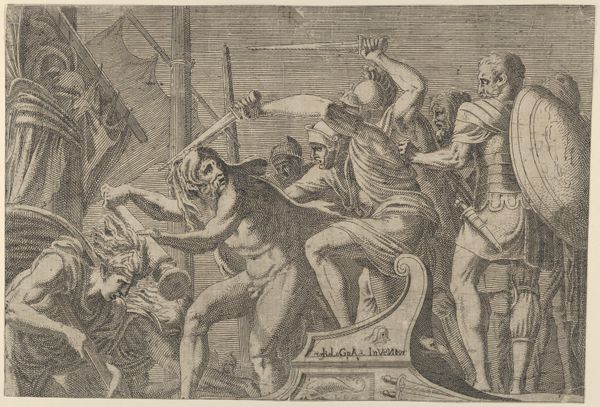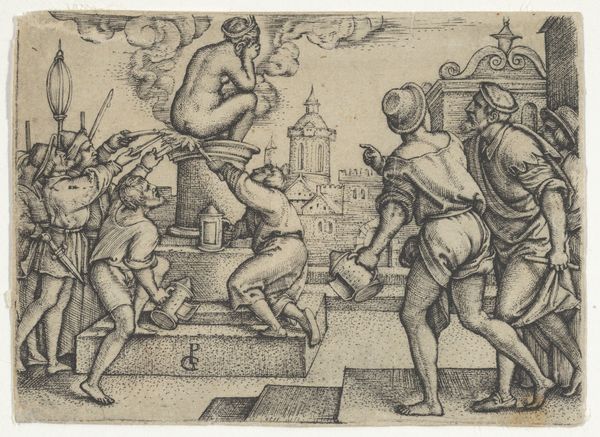
Speculum Romanae Magnificentiae: Dance of Fauns and Bacchants 1518
0:00
0:00
drawing, print, engraving
#
drawing
# print
#
figuration
#
form
#
11_renaissance
#
geometric
#
men
#
line
#
genre-painting
#
history-painting
#
musical-instrument
#
italian-renaissance
#
nude
#
engraving
Dimensions: mount: 11 1/4 x 13 in. (28.6 x 33 cm) sheet: 6 3/4 x 9 15/16 in. (17.1 x 25.2 cm)
Copyright: Public Domain
Curator: I find myself both intrigued and slightly unsettled by the swirling energy conveyed in this engraving, "Dance of Fauns and Bacchants." Editor: Yes, it’s incredibly active. There is almost an imbalance because there is a forward motion driving right to left. Note the attention to detail; the artist creates this sense of movement using clear, purposeful lines. Curator: The print dates to 1518 and is attributed to an anonymous artist featured in the *Speculum Romanae Magnificentiae,* a collection documenting the magnificence of ancient Rome and, naturally, displayed in the Metropolitan Museum of Art. The era witnessed rising enthusiasm among elites, notably reflected in collecting ancient artefacts, so this imaginary genre scene gains importance as an allegory. Editor: Those geometric floor tiles underfoot add so much to the perspective. But look more closely at the central female figure, probably a Bacchante. See how her drapery flares, reinforcing the implied motion. The engraving gives volume to her dress so it appears to actually flutter around her body. Curator: Consider what it means to represent these figures. This piece, like many others in the *Speculum,* functions as a kind of cultural advertisement. In showing the bacchanal, with its connotations of revelry and ecstasy, Renaissance society attempted to reclaim this perceived golden age and its freedoms, suggesting a conscious political identity. Editor: True, there's that association. But the dynamism inherent in the composition—that constant pull toward the right and the stark light-dark contrast—gives the figures an urgency. You know, an anxiety. This formal contradiction reflects the moral ambiguities tied to such displays. Curator: That's a wonderful point. The attempt to publicly legitimize displays of power with artistic license inevitably brings those sorts of internal contradictions. A potent snapshot of Renaissance aspirations! Editor: Absolutely! The stark contrast between form and content captures something vital about the era.
Comments
No comments
Be the first to comment and join the conversation on the ultimate creative platform.
